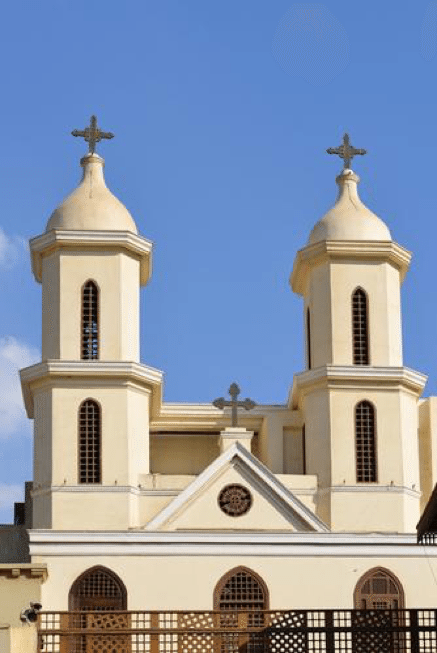
Part of the beauty of humanity is the distinct cultures that have been nurtured over several millennia on this planet. We treasure where we come from, and therefore preserve our customs; so well that there is often little deviance from the founding rituals. The Coptic Church, is a perfect example of such tradition.
The Coptic Church – Born in Egypt
Tradition states that the Coptic Church was established by an apostle and evangelist Saint Mark, in the middle of the 1st century AD. It is therefore generally regarded as one of the oldest, if not the oldest, Christian churches in the world. It is a part of the Oriental Orthodox family of Christian churches and based in Cairo. The most well-known Orthodox Churches are the Antiochian, Serbian, Ukrainian Carpatho-Russian, Greek, Romanian, and Russian Orthodox branches. However, these Eastern Christian churches also include the Armenian Apostolic Church, the Eritrean Orthodox Tewahedo Church, Ethiopian Orthodox Tewahedo Church, Malankara Orthodox Syrian Church, and the Syriac Orthodox Church.
The Coptic church derives its name from the common language of the first Egyptian Christians. When the church was founded during the reign of Nero, the faith was embraced rapidly by many in urban areas of the region. But Saint Mark did not initially bring the New Testament in the Coptic language. It wasn’t until early the next century that the New Testament was properly translated into Coptic. Once it was, it quickly took hold in the rural regions that spoke the language.
Coptic Funeral Traditions
According to historian Ceres Wissa Wassef, the funerary rituals of Coptic Christians are steeped in ritual. As someone approaches death, close friends and family vigilantly attend the person in their final days. A priest will also be on hand to dispense the last rites.
The Coptic tradition originally believed in expedient burial. If the person dies in the morning, burial is ideally the afternoon of the same day. Otherwise it will stay at home overnight and then the funeral will be held the next day. Today, these guidelines have been loosened to allow burial on the day the family prefers.
Coptic Burial: The Clothing and Treatment of the Deceased
Prior to the burial of the body, it is to be washed and then perfumed. Embalming has become accepted as well. The clothing will depend on a few factors. Women have historically been clothed in white linen, while men are in everyday apparel or something with a special formality to it. For the most devout, however, clothing worn on a holy pilgrimage may have been saved and is therefore the preferred choice. Another common option is for the body to be dressed in a shroud.
Once properly clothed and perfumed, the body is placed in a casket and bookended by a pair of candles. Coptic and Eastern Orthodox Christians do not believe in cremation, nor is someone that has committed suicide allowed a traditional funeral.
Coptic Mourning Traditions
Upon the death of a beloved individual, family and friends are expected to share the news through both media and word of mouth. Historically in rural villages, a six-female coalition dressed in black would wander through the neighborhood and wail the name of the deceased. In addition to informing the community, the family is expected to go to their church and pray on the deceased’s behalf. After death, Coptic Christians have often fasted until burial is completed.
As with many Christian sects, Coptic mourners are typically expected to wear black with head covers for women being customary.
Wailing has traditionally been part of the funeral itself as well. Before entering the room where the casket is located, some mourners would wail shrieks called suwat. The emotion is meant to honor the deceased. However, once in the presence of the dead, greeting and talking amongst mourners is frowned upon.
Coffee and cigarettes were traditionally expected after the funeral but frowned upon while still in the presence of the deceased.
In general, the opulence found at a Coptic funeral is used to indicate the social status of a family. This includes how many members of the clergy are in attendance. Hearses were typically pulled by several horses and live musicians performed funeral marches. Modern automobiles have changed this throughout much of the world but it can still be seen on occasion.
Coptic Tradition After Burial
After the burial of the deceased, friends and family return to the home of the deceased to eat. During the immediate three days post-funeral, people would pay visit to the family. Traditionally this was done by women in the morning and men at night. Relatives would often visit the family and mourn for forty days too.
Today this is less common, with condolences being focused on the church service. However, after three days, customs still retain that a priest or priests visit the family home to pray and then water if poured throughout the living space.
Coptic Funerals and Other Burial Traditions Observed by Memorial Properties
Memorial Properties is a family-run business that has seen firsthand how important customs are while mourning. We always strive to provide funeral programs for all groups, no matter the caste or creed. If in need of above-ground burial services, mausoleum space, entombment, or any other death care services, please contact us today.
